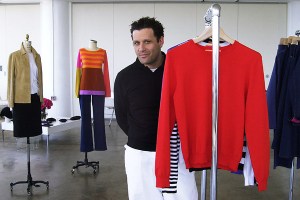
Selections from the Target / Neiman Marcus Holiday Collection available Dec. 1.
Founded in 1962, the same year as competitors Wal-Mart and K-Mart, Target realized from the beginning that it might never be able to win the low-cost contest among value-based retailers. Instead, executives adopted a “cheap chic” strategy from the onset, emphasizing style and design in its products, stores and advertisements as a way to distinguish the retailer from competitors. The plan paid off: Half a century later—thanks in part to the image it has cultivated as the cool discount store—Target has convinced dozens of nationally-known designers such as Rodarte and Jason Wu to step into big box store territory with lines that are as fashionable as they are cheap. And while prices might be slightly higher than its competitors, the products, from beauty and bags to clothing and shoes, are often prettier, too.
On Tuesday night, the retailer celebrated its 50th anniversary with a soirée and press day to preview its forthcoming holiday collection, designed by 24 members of the Council of Fashion Designers of America, including Prabal Gurung, Marc Jacobs and Michelle Obama favorite, Tracy Reese.
(VIDEO: Q+A with designer Prabal Gurung)
The collection—done in collaboration with luxury department store Neiman Marcus—follows a number of star partnerships Target has launched, starting with architect Michael Graves in 1999 and, perhaps most notably, with fashion designer Isaac Mizrahi in August 2003. At that time, designer diffusion lines weren’t popular or prevalent; critics questioned whether the collaboration would cheapen or dilute Mizrahi’s high-fashion cache.

Thomas Monaster / NY Daily News Archive / Getty Images
“I put a lot of eggs in that basket,” Mizrahi says of the Target partnership. “I risked a great deal, and before I did it, there were friends of mine who really strongly advised me against it. But I was so sure that it was time for that…And also, it was about Target at the time. Their image was poised on the brink of some fabulous recognition as well.”
Highly graphic commercials that mimicked fashion advertisements contributed to that stylish image. In one memorable 2000 ad, a model wore a cat bed as a hat, with a kitten perched on her shoulder; another print piece had a model wearing a sleeping bag as a skirt, with the sleeping bag unzipped to reveal a “slit.”
“It was the same product everywhere, but we wrapped them in this design-driven aesthetic that made them feel different,” says Jeff Jones, Target’s executive vice president and chief marketing officer. “We had to carve out a different space, and we couldn’t just be another company competing just on price.” Which isn’t to say Target’s competitors haven’t also tried that approach, with varying levels of financial success and notoriety. Wal-Mart and K-Mart have taken a celebrity-focused angle, offering clothing designed by Miley Cyrus and Sofia Vergara, respectively, while JCPenney has stuck to true fashion designers. The department store chain introduced a collaboration with Nicole Miller in 2005 and has since followed up with lines from Charlotte Ronson and Mary-Kate and Ashley Olsen. Elsewhere, Kohl’s has had an exclusive on Vera Wang’s Simply Vera diffusion line since 2007.

Target (2)
The crowded market means that Target can’t rest on its designer laurels, as the competition in the cheap chic arena continues to increase. But by upping its designer partners—and expanding the variety of products offered—it’s likely Target can stay ahead of competitors in the near future. This holiday, customers will have a chance to own an Oscar de la Renta tote for $60, but also a Carolina Herrera stationery set or Diane von Furstenberg yoga mat. “There are a lot of unexpected things in this collection,” says Kathee Tesija, executive vice president of merchandising at Target. “We help designers who are known for their evening gowns branch out into different categories, and I think that’s an exciting part of the process for our guest designers.”
MORE: Democratic Design—A history of designer diffusion lines

